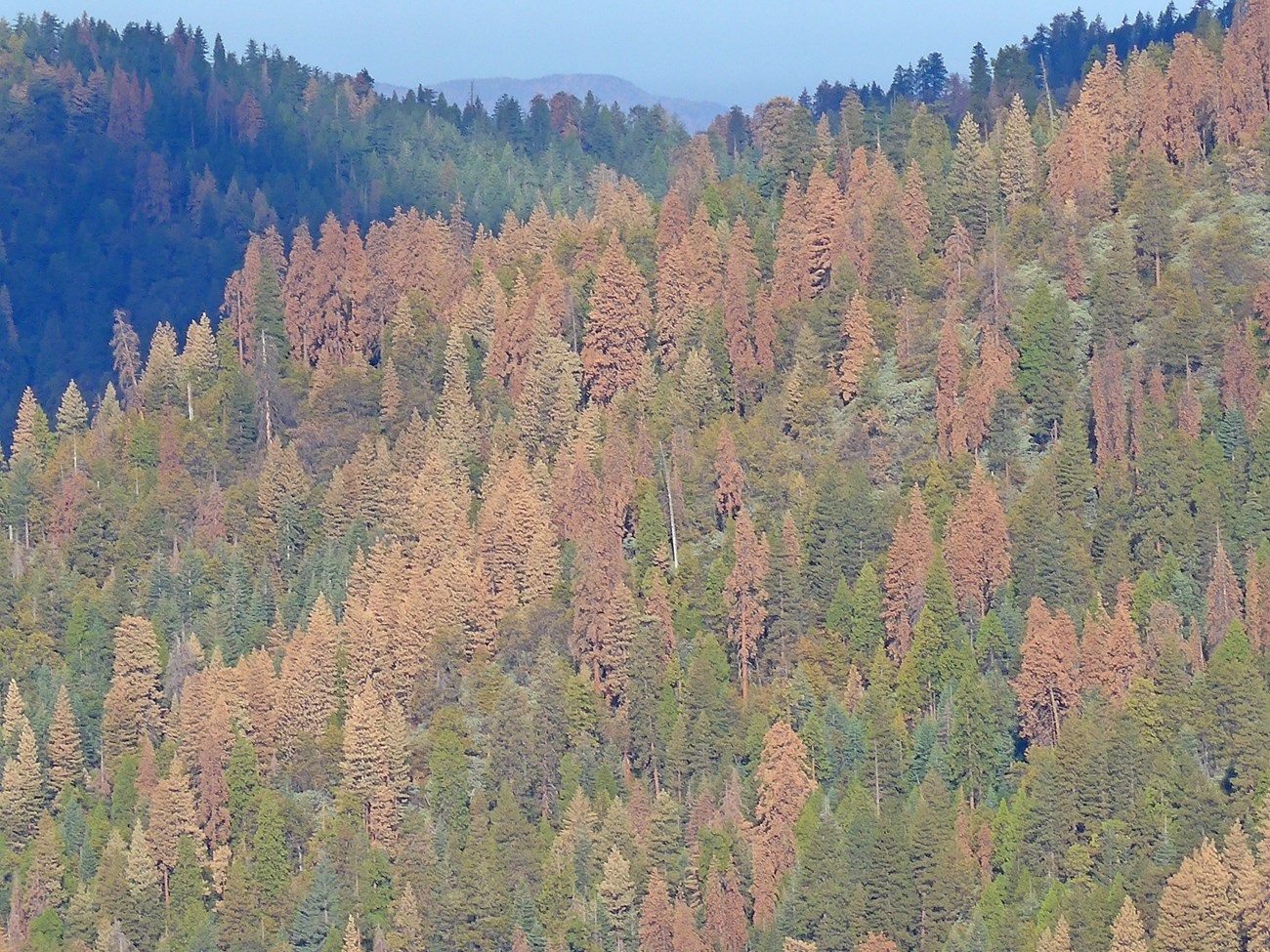
Photo courtesy of Nate Stephenson, USGS Sequoia-Kings Canyon Field Station Tree death from disease, insects, severe weather, or fire is a natural process in forests. The death of older or unhealthy trees makes room for young trees, provides nesting sites in standing snags for cavity-nesters like woodpeckers, and adds nutrients to the soil as the older trees decay or burn. But if many trees die in a short amount of time, over a large area, there can be long-term impacts to forest health. Dead trees near developed areas pose hazards as they may be at greater risk of falling on people or infrastructure. It’s important we better understand large-scale tree mortality and develop strategies to increase forest resilience to changing climate. Climate Change Impacts on ForestsRegional warming is implicated in the near doubling of annual tree-mortality rates measured in Sequoia National Park between 1983 and 2004. During the severe drought from 2012-2016, large numbers of trees died across the Sierra Nevada, particularly at lower elevations between 5,000 to 6,000 feet (see photo at top of page). This drought was severe because it was a “hotter drought”. Trees are already stressed from low levels of precipitation. The higher temperatures cause increased water loss from plants when the heat converts more fluid to water vapor (called evapotranspiration). Increased evapotranspiration made even less water available for the trees. This acute drought stress combined with bark beetle attacks resulted in greatly elevated mortality for several common tree species – ponderosa pine, sugar pine, incense-cedar, and white fir. During this hotter drought, scientists documented beetle kill of giant sequoias for the first time. Learn more on the Giant Sequoias and Climate page. 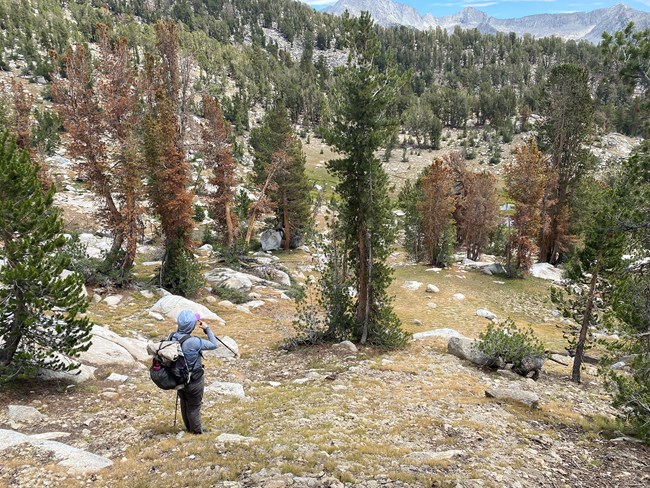
NPS Photo - Sean Auclair Even High Elevation Pines Showing StressIn 2021 and 2022, local scientists starting noticing that increased tree death was also occurring at higher elevations. Even foxtail pine and whitebark pine, trees found at the highest elevations where trees can grow, are dying at higher numbers than previously observed. Some trees show signs of stress with browning foliage, and some have signs of bark beetles or disease. Survey efforts are underway to determine the spatial extent, severity, and causes of this tree death. Even trees at higher elevations may be showing vulnerability to warmer temperatures and recent hotter drought. 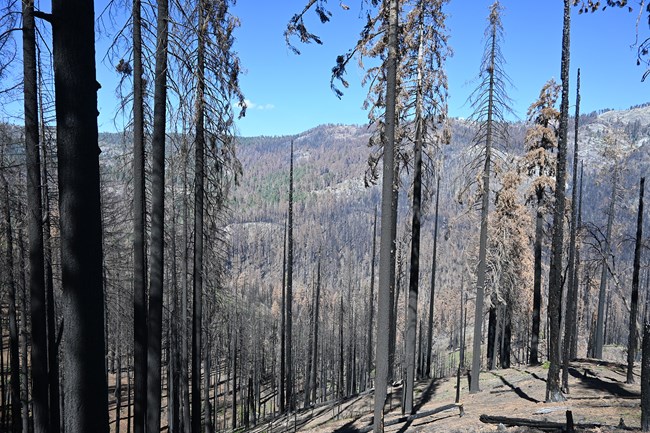
NPS - Linda Mutch Higher Severity Fires Kill Thousands of TreesMuch of the montane forest zone is at risk of severe fire because many areas have not burned in recent decades; warming, drying conditions also contribute to longer fire seasons and more extreme burning conditions. Since 2015, high-severity wildfires killed many trees in Sierran mixed-conifer forests, including an estimated 13-19 percent of all large giant sequoias. See the Giant Sequoias and Fire page for more information. 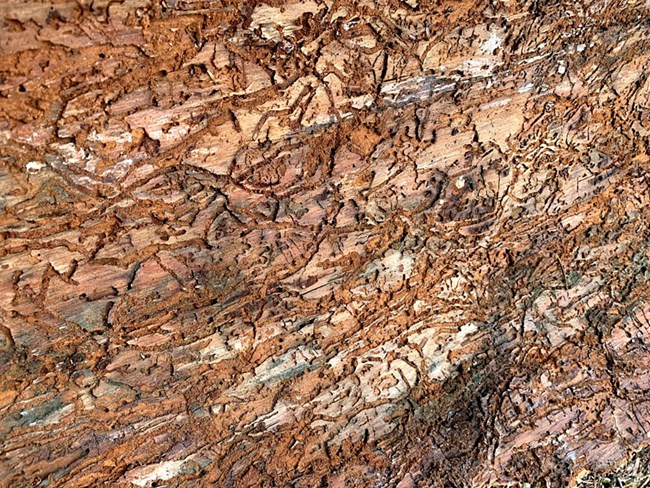
Photo courtesy of USGS Sequoia-Kings Canyon Field Station Bark Beetles and PathogensWarming temperatures can affect bark beetle life cycles in different ways, and the drought-stressed trees have increased vulnerability to beetle attack. They often cannot produce the pitch that helps protect them from beetles. Once beetles burrow through the bark and reach the inner bark (living tissue called phloem) that transports proteins, sugar, and nutrients, they create intricate patterns of galleries or tunnels when they feed. They lay eggs and produce larvae that continue this feeding and tunneling. Eventually, there are so many galleries that the flow of important “food” for the tree is cut off or greatly reduced. Bark beetle attack, along with other insects and pathogens, is often their final cause of death. 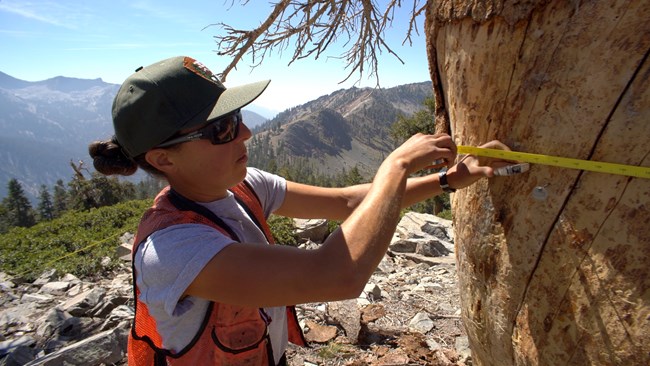
© Michael Durham Understanding Tree DeathPark managers, local scientists, and partners are conducting research to better understand the different interacting factors affecting tree death. This knowledge informs management decisions for increasing forest resilience to stress from changing climate, hotter droughts, and more severe wildfires. Managing Tree Hazards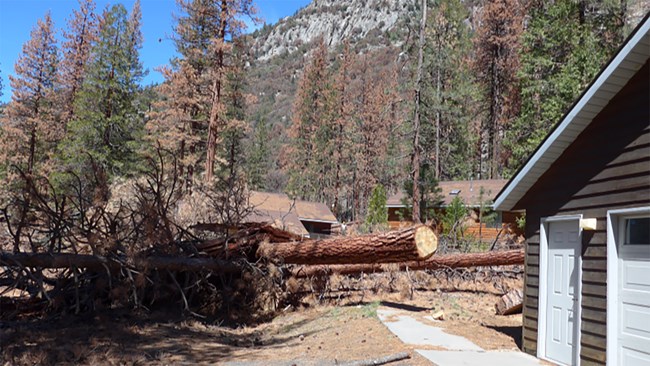
NPS Photo Diseases and insects, along with wind, snow, fire, and local conditions like soil moisture, combine with human activities to create tree hazards. Dead trees, and live trees with structural defects, can present hazards in the parks’ developed areas, including campgrounds, roadways, visitor centers, and administrative sites. These defects contribute to tree failures (parts of the tree breaking off, or the entire tree falling). Because trees often contain structural defects that contribute to their failure and constitute a hazard to humans, their preservation must be balanced with the need for visitor safety. |
Last updated: October 17, 2023
